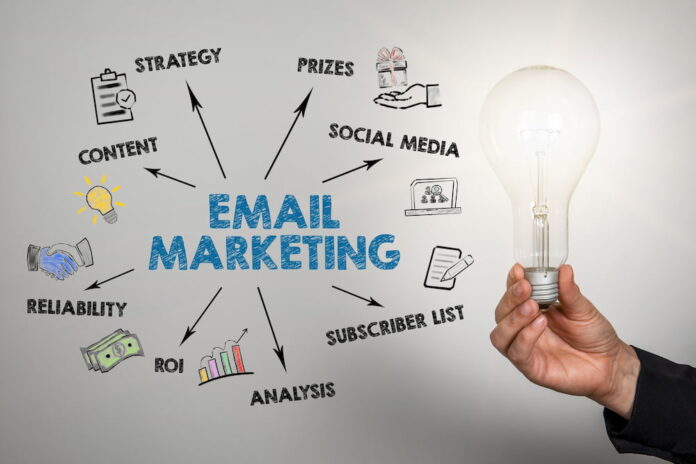Email marketing remains one of the most effective and valuable tools in a marketer’s arsenal. However, simply sending out emails is not enough to achieve desired results. To maximize the impact of your email marketing campaigns, it’s crucial to optimize them for better conversion rates. In this article, we will explore proven strategies and best practices to help you optimize your email marketing campaigns and drive higher conversions.
1- Define Your Conversion Goals:
Before diving into optimization techniques, clearly define your conversion goals. Are you aiming to increase sales, generate leads, promote a new product, or encourage website traffic? Understanding your objectives will help shape the content, design, and call-to-action (CTA) elements of your email campaigns.
2- Segment Your Email List:
Segmentation allows you to send more targeted and personalized emails, resulting in higher engagement and conversion rates. Divide your email list into smaller groups based on demographics, interests, purchase history, or engagement level. Tailor your content and offer to suit each segment, increasing the relevance and effectiveness of your emails.
Protip: Now finding emails has been easier. Thanks to email search tools like GetEmail.io where you can find someone’s email address for free even on platforms like Gmail, Linkedin and Salesforce.
3- Craft Compelling Subject Lines:
The subject line is the gateway to your email. It should grab attention, pique curiosity, and entice recipients to open the email. Keep subject lines concise, clear, and compelling. Experiment with personalization, urgency, and enticing offers to increase open rates.
4- Create Engaging and Relevant Content:
The content of your emails should be engaging, valuable, and relevant to your audience. Use a conversational tone, incorporate storytelling techniques, and provide actionable information or exclusive offers. Focus on benefits, addressing pain points, and solving problems to captivate your readers and encourage conversions.
5- Optimize Email Design for Mobile Devices:
With a significant portion of email opens occurring on mobile devices, it’s crucial to optimize your email design for mobile responsiveness. Use a responsive email template that adapts to different screen sizes, and ensure that images, text, and CTAs are easily visible and clickable on smaller screens.
6- Use Persuasive CTAs:
The call-to-action (CTA) is a critical element that drives conversions. Make your CTAs prominent, clear, and action-oriented. Use compelling language, such as “Shop Now,” “Learn More,” or “Claim Your Discount.” Experiment with CTA placement and design to find the most effective combination.
7- Implement A/B Testing:
A/B testing allows you to experiment with different elements of your email campaigns to identify the most effective strategies. Test variables such as subject lines, email content, CTAs, visuals, and sending times. Analyze the results and refine your approach based on data-driven insights.
8- Personalize and Automate:
Leverage personalization and automation to create targeted and timely emails. Use recipient names, past purchase history, or browsing behavior to personalize email content. Implement automation workflows to send triggered emails based on specific actions or events, such as welcome emails, abandoned cart reminders, or post-purchase follow-ups.
9- Monitor and Analyze Metrics:
Regularly monitor and analyze key email marketing metrics to gain insights into campaign performance. Track metrics such as open rates, click-through rates (CTRs), conversion rates, and unsubscribe rates. Use this data to refine your strategies, identify areas for improvement, and optimize future campaigns.
10- Maintain a Consistent Sending Schedule:
Consistency is key in email marketing. Determine a regular sending schedule that aligns with your audience’s preferences and expectations. Avoid bombarding subscribers with excessive emails, as it may lead to unsubscribes or reduced engagement. Find the right balance to keep your brand top-of-mind without overwhelming recipients.
Conclusion
Optimizing your email marketing campaigns for better conversion rates requires a combination of strategic planning, thoughtful content creation, and continuous analysis.
By segmenting your list, crafting compelling subject lines and content, optimizing for mobile, personalizing emails, and analyzing performance metrics, you can enhance the effectiveness of your campaigns and achieve higher conversion rates.
Remember to continuously test and refine your strategies to adapt to evolving customer preferences and industry trends.
Email marketing has the power to deliver impressive results when executed with precision and optimization. Implement the strategies outlined in this article, and watch your conversion rates soar.
Eat well, get plenty of exercise, and live a generally healthy lifestyle to keep your testosterone levels where they should be.
Read Also
- Hardened shelter solutions reshape how military operations stay safe and functional in the fieldDifficult terrain, unpredictable threats and long deployments have driven modern militaries to reconsider how they create safe, reliable spaces in the field. Rigid wall shelters and container-based structures are becoming the quiet backbone of operations, offering durability, mobility and real comfort for the troops and support teams. When most people think of military bases, they… Read more: Hardened shelter solutions reshape how military operations stay safe and functional in the field
- The Function of a CRO for Clinical Trials: Structure, Responsibilities, and Operational ImpactClinical trials rely on organized systems that ensure scientific validity, participant protection, and regulatory compliance. As protocols become more intricate and studies expand across multiple regions, many sponsors collaborate with specialized partners to manage key operational and methodological tasks. A CRO for clinical trials provides this structured support, coordinating the activities required to move a study from… Read more: The Function of a CRO for Clinical Trials: Structure, Responsibilities, and Operational Impact
- Innovative Strategies for Marketing Neuropathy TreatmentsLiving with neuropathy can be difficult, both physically and mentally. As a healthcare professional, you see how much it affects your patients and how important it is to find treatments that truly help. But with new medical updates and a fast-changing digital world, marketing neuropathy treatments can feel overwhelming. This is where fresh, practical strategies… Read more: Innovative Strategies for Marketing Neuropathy Treatments
- The Art of Thumbnails: Smart Design Hacks for More Channel ViewsHave you ever wondered why some videos get thousands of clicks while others are ignored, even if the content is good? The answer often lies in the thumbnail. A thumbnail is the first impression a viewer gets before deciding to watch. It works like a book cover that can pull people in or push them… Read more: The Art of Thumbnails: Smart Design Hacks for More Channel Views
- How to Choose the Right KOL Management Platform for Your Medical Affairs TeamSelecting the right KOL management platform is no longer just a tactical decision, it’s a strategic one. That’s because the platform you choose influences how effectively your medical affairs team identifies key healthcare professionals, engages with them, and sustains long-term scientific relationships. With multiple KOL management companies and technology vendors offering varying levels of data,… Read more: How to Choose the Right KOL Management Platform for Your Medical Affairs Team
- Boosting Your Healthcare Business with At-Home Testosterone Testing InnovationsThe healthcare landscape is rapidly evolving, with patient-centered care and convenience becoming paramount considerations for modern medical practices. Among the most significant developments in recent years has been the rise of at-home diagnostic testing, particularly in the realm of hormone health. For healthcare businesses looking to expand their services and improve patient satisfaction, incorporating at-home… Read more: Boosting Your Healthcare Business with At-Home Testosterone Testing Innovations







